On our recent trip to Atlantic Beach we had all kinds of weather—stormy, rainy, brilliantly sunny, sometimes all at once. The waves were a little rough, and when we got tired of “crashing” in them (what Harriet calls playing in the ocean) we walked up and down the shore.
On our evening walks especially, we loved seeing beds of coquinas along the shore. Coquina clams are small, rainbow-colored, wedge-shaped bivalves that migrate along the swash zone, or the part of the beach that is covered and uncovered by waves between high and low tide. We didn’t know the name of these shells, but our handy Seek app (which seems really great at identifying shells and jellies) identified them easily.
Both Bea and Harriet loved watching the coquinas emerge, then dig themselves back into the sand. Sometimes you could see them stick out their tiny foot, which they use to travel to the best feeding spot.
“They just pop up and pop down,” Harriet said.
Coquinas are filter feeders, taking oxygen, algae, and phytoplankton from the water. Like other filter feeding mollusks, they also help clean the water of pollutants and silt, as well as nitrogen, which they use to build their shells. (Too much nitrogen in the water can produce harmful algal blooms.) They’re food for shorebirds and fish, and were also collected by Indigenous people and early settlers to be used in chowder.
When the tide starts to go out and coquinas have collected enough food, they “surf” by hopping out of the sand and riding waves back into the ocean.
Like other mollusks, coquinas are an indicator species that can tell you if your waters are healthy. We were happy to see so many on our stretch of beach. But like other beautiful sea life they’re also sensitive to pollution, especially ocean acidification caused by global warming, greenhouse gas emissions, and plastics, which leach harmful chemicals, including carbon dioxide, into the water. Earth’s oceans absorb about 30% of human-caused carbon emissions, which lowers the pH of the waters. Lower pH makes the water more acidic, which also makes it harder for bivalves like coquinas to build their shells. Here’s a good explanation of the dangers from NOAA:
Ocean acidification is already impacting many ocean species, especially organisms like oysters and corals that make hard shells and skeletons by combining calcium and carbonate from seawater. However, as ocean acidification increases, available carbonate ions (CO32-) bond with excess hydrogen, resulting in fewer carbonate ions available for calcifying organisms to build and maintain their shells, skeletons, and other calcium carbonate structures. If the pH gets too low, shells and skeletons can even begin to dissolve.
One morning a shell seeker told us that she wasn’t finding nearly as many shells as she had in years past. Is this true for you?
We usually collect just a few shells with our beach trips—it’s important to only collect empty ones!—and like to use them in our art projects.
While Bea was at opera camp this week, Harriet and I made a mixed-media painting that incorporated some of our favorite shells, including a coquina shell. Here’s how we made our painting:
First, we mixed up some blue and purple tempera paint with water inside two spray bottles. Harriet sprayed this onto a square of thick white paper. This was our stormy sky.
Next, we cut blue paper into the shape of waves and glued them down. We added a little white paper scraps for the foam.
We added a paper bag scrap for the beach, then glued on our smallest shells.
Finally, we glued it all onto a square of cardboard, and wound and glued kitchen twine around the edges for the frame.
We love how our little painting turned out!
Other things we’re enjoying lately:
-The nightly firefly show in our woods (don’t spray pesticides! leave your leaves!)
-Looking for mushrooms (waiting and hoping for chanterelles to emerge).
-Introducing friends to the joys of a Haw River splash.
-This scrollable illustration of animals that live at different (incredibly deep) ocean depths.
-Reading all we can about the amazing story of the four Huitoto Indigenous children (age 13, 9, 5, and 11 months!) who survived a plane crash and 40 days in the Amazon rainforest. We really hope Lesly, the 13 year old who led them in their survival, will write a book. This story about the Indigenous Guard who helped rescue them, was also fascinating. Such an incredible counterpoint to the story of the Titan submarine—and much more deserving of attention.
Any summer crafts and fun you’re trying and loving, Frog Troublers? Are you noticing a decline in seashells? Have you ever enjoyed watching coquinas?

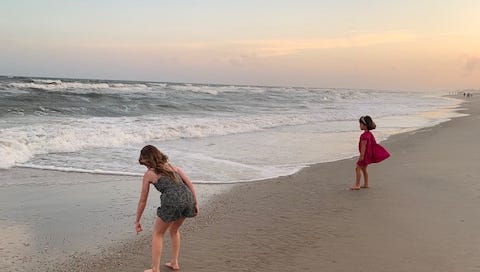



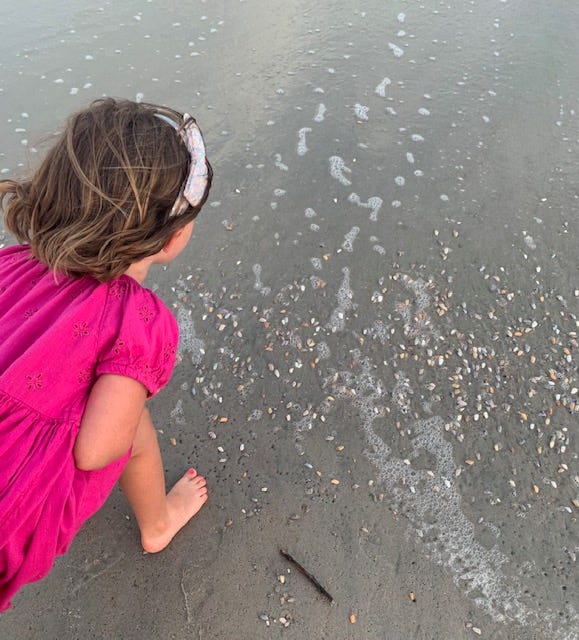
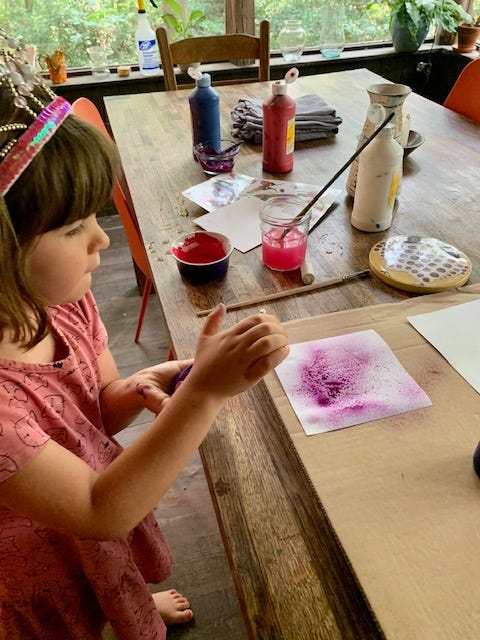
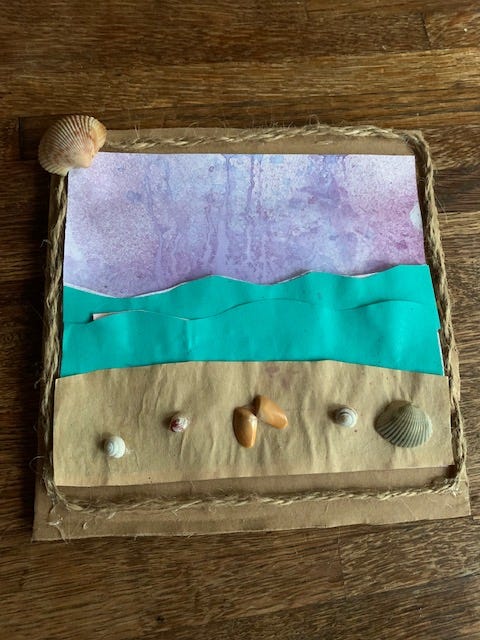
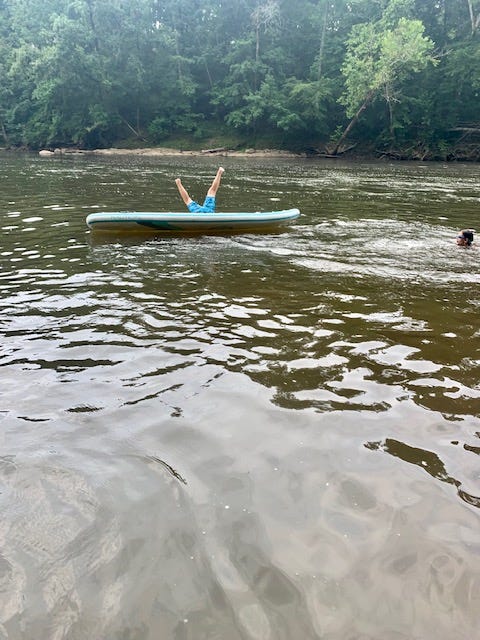
Wow! I love your painting ! Also Harriet’s crow and ditto your photos
And ditto the comment from N Rives Mills comment
And ditto Frog Trouble Times!
I can’t wait to see you tomorrow evening at 5:47 pm ! Hope my train i
S on time !
I missed this edition somehow! Glad to have found it, even thought it's now August.